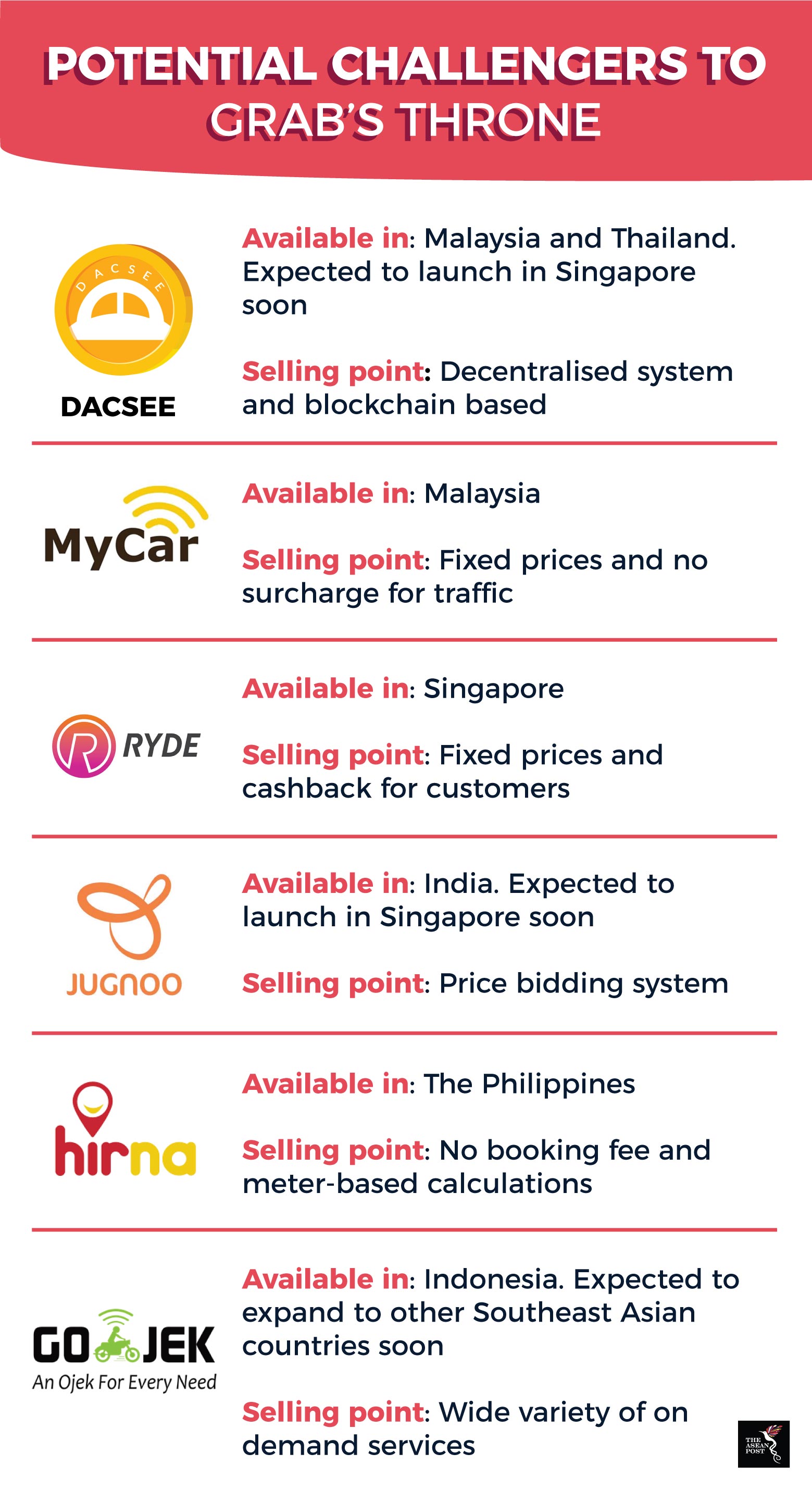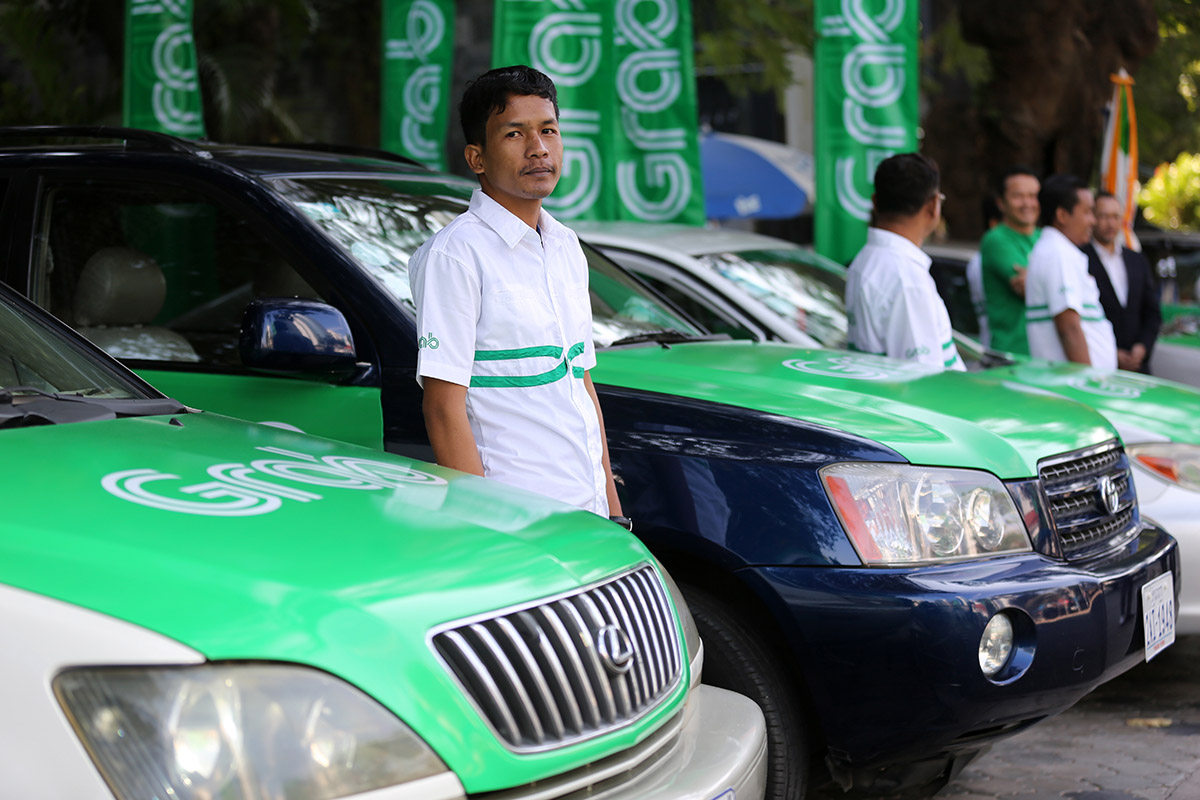When pioneer of the ride-hailing business, Uber announced that it will exit the Southeast Asian market, consumers feared that this would effectively mean a Grab monopoly in the market. However, ever since Uber’s exit, many new startups have entered the ride-hailing business looking to fill the gap left by Uber. Throughout the region, new ride-hailing apps are mushrooming. Furthermore, existing local giants such as Indonesia’s Go-Jek are expected to expand in the region, giving Grab a run for its money.
Uber exited the region last month after several months of speculation that it would merge its operations with that of Grab’s. Uber was backed by Softbank, who are also big investors of Grab. The move was seen as Softbank consolidating its assets by reducing competition in its portfolio. Another reason why Uber agreed to exit the region is that it is widely believed that Uber is losing to Grab despite making investments of over US$700 million over the past five years.
Despite Grab’s popularity in the region, Uber’s market share in the ride-hailing business isn’t small either. In a survey of the Indonesian ride-hailing market by the Financial Times Confidential Unit, 48% of Indonesians used Uber in the past 12 months. 48% in a country said to be dominated by Go-Jek is an impressive feat.
While extrapolating that data and applying it to the rest of the region would be foolish, but it’s fair to say that Uber was a major competitor of Go-Jek and Grab and had a decent sized customer base. With their exit, a lot of startups have entered the market looking to fill the void left by Uber.
Aside from Uber’s exit, the fears of a Grab monopoly should be reason enough to enter the market. A Grab monopoly would be dangerous to consumers and workers alike. In a monopoly, Grab wouldn’t have any competitors and would have the power to set prices as it so chooses. Consumers are already complaining that Grab has begun charging more for their rides now. Now would be an opportune time for new smaller ride-hailing startups to enter the market with lower prices to compete with Grab.

A popular app that has emerged in Uber’s wake is MyCar in Malaysia. MyCar proclaims themselves to be the “third e-hailing force” in the country. Local media there reported, that MyCar received 2,000 applications from former Uber drivers since the announcement of Uber’s exit. MyCar claims to be the cheaper option and does not take commission from drivers. The sustainability of such a model may be suspect, but it is currently giving Grab some healthy competition in the country.
Ride-hailing apps from outside the region are also preparing to come in to compete with Grab. India’s third largest ride-hailing app, Jugnoo is expected to be available in Singapore from May onwards. Jugnoo differentiates itself from other apps through its reverse-bidding model where drivers bid a price for each ride, and riders choose a driver based on price.
Besides that, some companies may have taken Uber’s exit as a lesson to have more innovative practices on its ride-hailing platform. Enter Dacsee, a community-run, decentralised ride-sharing platform. Launched in Malaysia, the app has since expanded to Thailand and possibly Singapore soon. Dacsee runs on a blockchain based platform where drivers have to open up an e-wallet account with them.
Meanwhile, in the Philippines, the ride-hailing game is blossoming with companies such as Go Lag, Owto, Hype and Hirna setting up shop there. Despite these new startups, all eyes will still be on Go-Jek. Many have been speculating that Go-Jek is expected to expand this year. According to various reports, Go-Jek is expected to start operations in the Philippines, Singapore and Vietnam this year.
While the introduction of new startups to the ride-hailing business may be good for the market, realistically Go-Jek is the only one that could potentially compete on a level playing field with Grab. The rest of these startups are still small and their capability to scale is still questionable. Go-Jek on the other hand is a regionally recognisable name and has enough capital to expand and compete with Grab. Similar to Grab, Go-Jek offers a wide range of services such as Go-Car, Go-Food and their latest, an e-wallets service called Go-Pay.
The growth of the e-hailing business is a net benefit to everyone. Companies will improve as they begin to innovate and diversify to capture the market. As a result, consumers and workers will benefit from the range of choices that are on offer.
